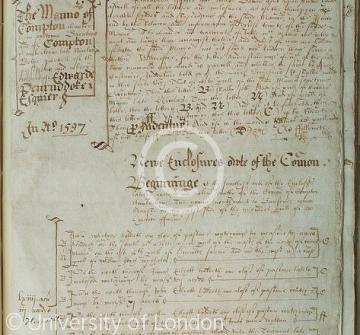Estate Management

There have been different ways of managing land in the past, which have tended to reflect the level of involvement of the landowner with his property, as well as the size of the property. The demesne land integral to the manorial system was often overseen by the landowner himself, or an steward working on his behalf. Institutional owners, along with some private landlords, preferred to keep a distance between themselves and their farms. In these circumstances, systems of management was developed which enabled owners to manage at a distance. Copyhold, for example, was a way of ensuring intergenerational property transmission (through the payment of a ‘fine’) in which the incentive lay with the tenant.
By contrast, with freehold tenancy, the landlord looked to maximise his income by direct management through an appointed agent or steward, whose duties included the twice yearly collection of rent. As tenancy shifted through time towards direct management, the role of the steward evolved into that of the professional agent, and on larger estates these men could be figures of regional importance, who commanded considerable salaries. On medium estates, landowners often employed estate agency firms to look after their estates, when they did not require a full-time agent of their own. Smaller owners tended to run their estates themselves, or to employ the services of a bailiff, who was often one of their own tenants. One unwritten rule was that if the landlord did not visit his estates on a regular basis, management became more difficult because tenants took the view that absence meant rents did not need to be paid.









